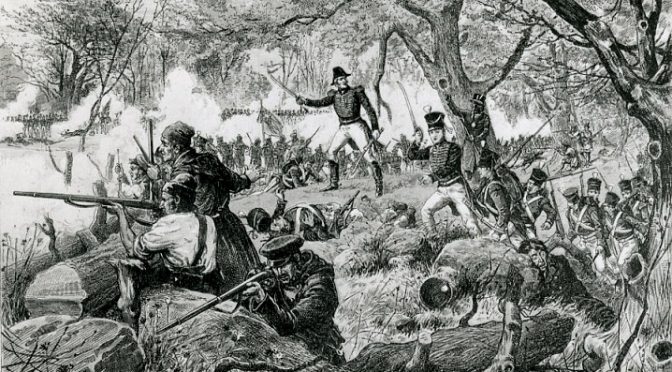It’s often easy to forget the role that France, and along with them the Basques from Iparralde, had in the history of North America. From Louisiana to Canada, Iparraldetarrak had an enormous hand in shaping the history of the continent. One dramatic example comes from Quebec, in which the grandson of a Basque military officer and shipowner from a small town in Lapurdi ended up saving Canada from assault by US forces and playing a key role in keeping Canada independent from the United States.

- Charles-Michel d’Irumberry de Salaberry was born on November 19, 1778 in Beauport, Canada, not far from Quebec. His father, Ignace-Michel-Louis-Antoine d’Irumberry de Salaberry, was the first Salaberry to establish permanent roots in Canada. Like his son, Ignace was a military man and was a friend of Prince Edward Augustus, a relationship which greatly benefited the family.
- Charles’s grandfather, Michel de Salaberry, had been the first of the Salaberry’s to go to Canada, though he eventually returned to France. Born in the small village of Ziburu, Lapurdi, he was a shipowner from the d’Irumberry de Salaberry family. He had married once in Quebec but seemingly left his family as he found life on the ground too boring. Michel had a successful military career in the Royal Army of France, capped off in 1758 when he was ordered to sink his frigate, La Fidèle, to block the harbor of the city of Louisbourg from the approaching British fleet.
- In contrast to his grandfather, Charles fought for the British, as by his lifetime Canada was controlled by the British throne. He enrolled early, at 14 years old, and his first action took him to the West Indies, where his contingent of 200 men (already reduced dramatically due to yellow fever) attempted a siege of Fort Matilda in St. Domingue (today the Dominican Republic and Haiti). All but three men were killed or wounded. Charles was cited for bravery and put in charge of the evacuation of the survivors.
- During a campaign in Jamaica, he engaged in a duel with a fellow soldier from Germany. The German had burst in during breakfast, boasting of how he had just killed another French-Canadian in a duel (there were only two French-Canadians amongst the officers of Charles’s regiment: Charles himself and Lt. Thomas-Hippolyte Trottier DesRivières). After breakfast, Charles and the German dueled by sword. Even after receiving a vicious wound across his forehead that bled profusely, Charles kept fighting, tying a handkerchief around his head and eventually dealing his foe a mortal wound.
- Charles was central to Canada’s effort in the War of 1812, pushing back the American advance and, according to some historians, saving Canada. His greatest achievement occurred in October of 1813, where, in the Battle of the Chateauguay, he and his men repelled the advancing America forces of Major General Wade Hampton, who had the ultimate goal of taking Montreal. So confident was Charles of victory, that he didn’t inform his superiors of his plans. On his own, he ordered the placement of defensive obstacles and troop deployments. He had buglers sound from different locations to imply a much larger force than he really had. After the engagement, in which the Americans had no hope of advancing, they ultimately retreated and abandoned their goal of capturing Montreal.
- The battle made Charles a legend in Canadian history. He was subsequently made a Companion of the Order of the Bath. In 1968, his house was named a National Historic Site of Canada. In 2013, 200 years after the battle, his face was on a Canadian quarter. Two places – Salaberry-de-Valleyfield and De Salaberry – are named for him in light of his achievements.
Primary sources: Charles de Salaberry, Wikipedia.
Discover more from Buber's Basque Page
Subscribe to get the latest posts sent to your email.


